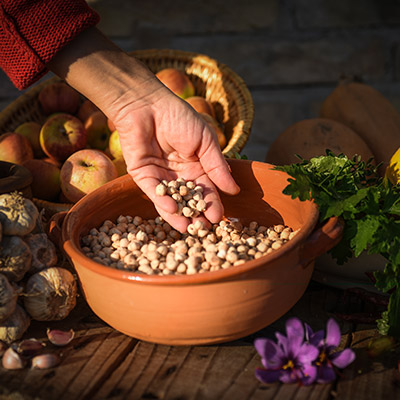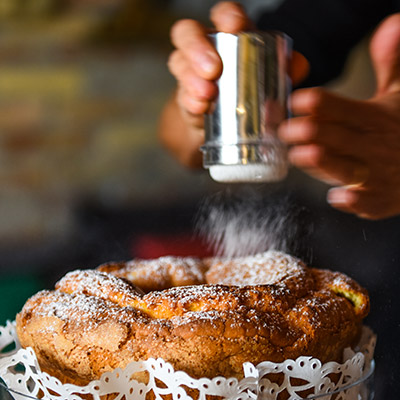The seasons and local traditions
Memories from the past
SUMMER: the season of harvest. The crop fields and threshing floors in the farmyards bustled with activity, the wheat sheaves were piled around tall wooden poles and the smell of wheat filled the air.
It was hard work for the men and women on the farms, but carefreeness and a joyful atmosphere never failed to ease their toil.
In the kitchens, delicious tomato sauces simmered in large pots. Hand made fresh pasta, the famous maccheroncini, were served to the farmhand at lunchtime, accompanied by the best local wines and refreshing spring water.
AUTUMN: grape harvesting time. In the vineyards the workers, shears and baskets in hand, harvested the clusters of sweet grapes which would later become must in the vats and, finally, wine. From the early hours of the morning, the harvesters were offered refreshments which included all kinds of local specialities: stockfish with potatoes, tagliatelle with ragu, roast chicken, de-salted sardines, wild herbs. Olive picking by hand was another very important season event. Again, very hard work, but a joyful occasion for those who took part in the harvest. The olives were then taken to the mill, where they were pressed to produce what was and is one of the most precious, essential ingredients of the Italian cuisine: Extra Virgin Olive Oil.
WINTER: the season of rest. Less daylight means shorter days, the colder temperatures cause country routine to gradually slow down, until it eventually reaches a standstill. In the past, the stables, heated by the farm animals, became a meeting place where men did wickerwork and women enjoyed knitting.
Every family farmed pigs. Pork as fresh meat, or salted and seasoned for longer preservation, was the basis for many traditional recipes, typical of the cold season.
SPRING: the awakening of nature, with its beautiful colours, its scents. In the kitchens of the country homes the produce of the land, fresh vegetables, fresh bread with olive oil, broad beans and fresh sheep milk cheese are a daily treat.
The local cuisine, simple but noble, has a very important role in the tradition of our countryside. In the past it was meant to reinvigorate the farm workers and provide an occasion to rest, a break from work, often accompanied by music and singing. An outdoor wood burning oven would often be used to roast chicken, goose and duck.
Starters included cacciannanze and lonza (local focaccia bread and cured pork loin), and conviviality was fuelled by good wine. First and second courses followed: home-made pasta, boiled meat, beef stew, roast meat, fries, game innards and, finally, sweets and cakes..... a rich cuisine with a strong identity.
Very often the yard was cleared after lunch and everyone would dance the saltarello, a favourite of the country-people of Le Marche, to the music of a concertina.




